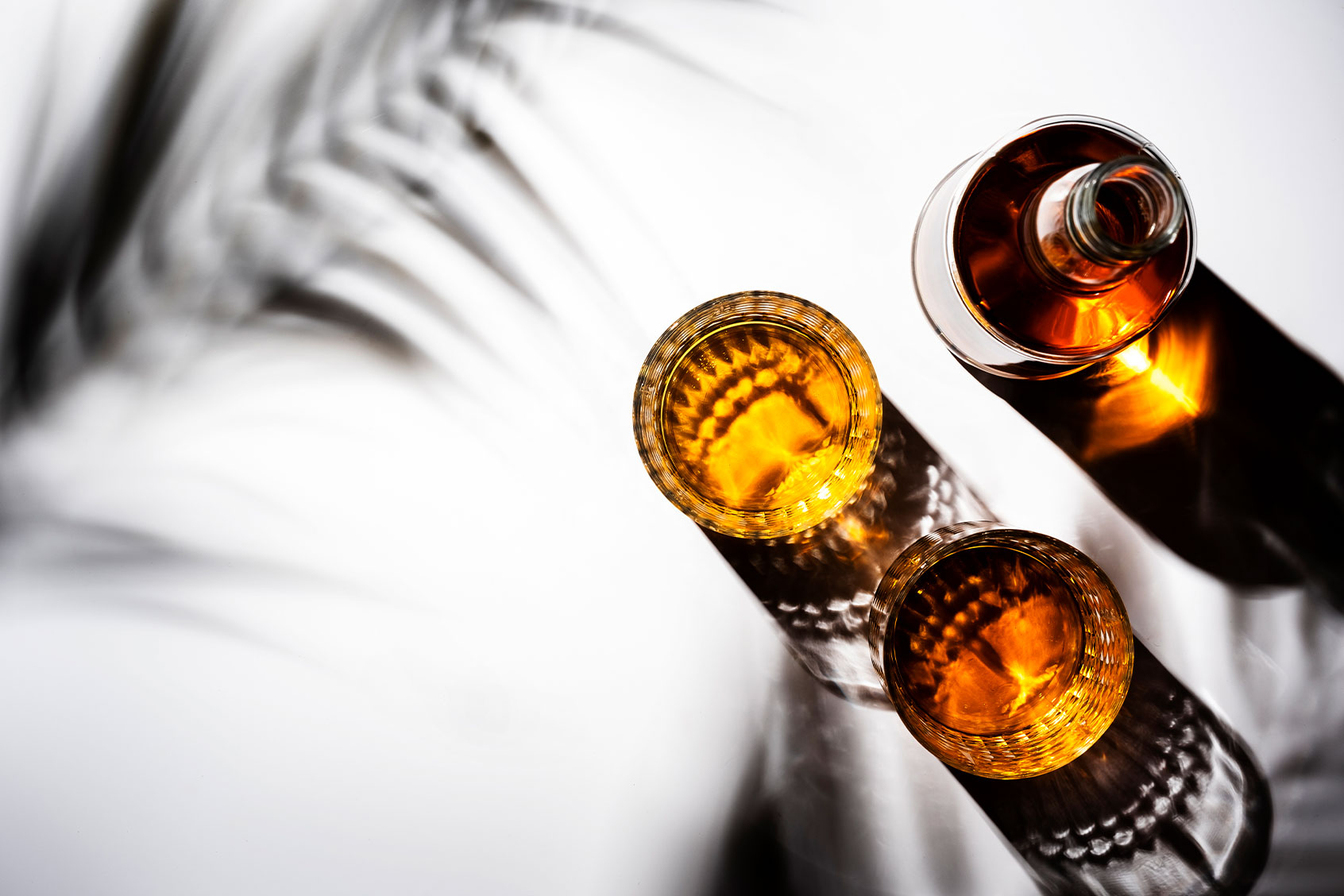On a cloudy November morning about seven years ago, I huddled shoulder-to-shoulder with a group of Castle & Key employees inside the distillery’s wrought iron gates. It wasn’t quite winter weather, but the air in Frankfort, Ky., was cool enough that our collective breath formed a tiny cloud of steam that hovered around our faces. Finally, the gates opened, and some greeted the entering delivery truck with a small, but hearty cheer.
The hatch-door of the truck was backed up to a small metal basin, and head distiller Marianne Eaves readied her iPhone to record. Within a few seconds, the hatch opened. Fat, dried corn kernels — which were the color of fresh buttermilk — pelted into the basin. Slowly at first with a heavy plunk–plunk, then more quickly until the sound of grain hitting metal roared like some kind of mechanical wave.
Once the final kernel hit the pile, Eaves stopped recording and stood up straight. “This . . .” she said while pushing her phone into her coat pocket. “This is a really big day. It’s just incredible. Receiving this grain today is a huge part of that.”
She continued, “We are, as of today, about three weeks away from our first production at Castle & Key for the first time in over 40 years, almost half a century.”
At this point, Eaves — who holds the distinction of being Kentucky’s first female bourbon Master Distiller since Prohibition, and has since moved on to start her own business Eaves Blind — had spent nearly a year refurbishing the dilapidated distillery grounds that once housed the historic Old Taylor Bourbon Distillery.
The fact that the distillery was finally about to start making bourbon again was momentous. As with all bourbon, a big part of why that was possible was this shipment of corn.
Want more great food writing and recipes? Subscribe to Salon Food’s newsletter, The Bite.
When you look at the mashbill (the combination of grains used in a distiller’s recipe) of any given bourbon, you’ll see that corn always makes up at least 51% of the mixture. This isn’t an accident — it’s a stipulation that was written into law more than 100 years ago. But how, exactly, did corn become such an integral part of America’s Native Spirit?
The first residents of the region were, of course, Native Americans, including the Cherokee, Chickasaw and Shawnee. Many of these indigenous tribes were skilled in agriculture, including the cultivation of multiple varieties of corn, a crop that was not only respected but also revered. It grew well in the region, thanks to the geography and climate.
I think the Encyclopedia Britannica entry about the Corn Belt, which includes Kentucky, actually explains it quite beautifully:
Soils are deep, fertile and rich in organic material and nitrogen, and the land is relatively level. The warm nights, hot days and well-distributed rainfall of the region during the growing season are ideal conditions for raising corn.
When immigrants, who were largely German and Scots-Irish, later settled in the region, they too began to grow corn. The harvests were plentiful enough that many farmers would distill any extra grain into a spirit that could be sold during the lean winter months. In many ways, this spirit mimicked the Irish whiskeys sold overseas, with one notable exception — the use of corn, which gave the drink a unique robust sweetness (and a little subtle leatheriness as it aged).
For that reason, corn became a recognizable flavor in “Kentucky whiskey.”
For that reason, corn became a recognizable flavor in “Kentucky whiskey.”
As the historian Michael Veach has written, James C. Crow was a Scottish chemist-turned-distiller, who worked at the Old Oscar Pepper Distillery in the 1830s. He is loosely credited with perfecting a majority-corn mash bill that was so popular, it began to be imitated by other distillers.
It would be another hundred years, however, before corn’s place in whiskey would be codified into law. In 1909, former President William Howard Taft’s “Decision on Whiskey” was released, which stipulated bourbon whiskey must have a mash bill that is majority corn.
Then finally, in 1935, the Standards of Identity for Distilled Spirits, which is part of the U.S. Code of Federal Regulations, mandated that bourbon must include 51% corn in the mash bill.
To this day, Kentucky’s bourbon and corn industries operate hand-in-hand. According to the U.S. Department of Agriculture’s National Agricultural Statistics Survey, Kentucky produced the largest corn crop ever grown in the commonwealth in 2021, which numbered 274 million bushels. About 20 million bushels were used by the bourbon industry.

